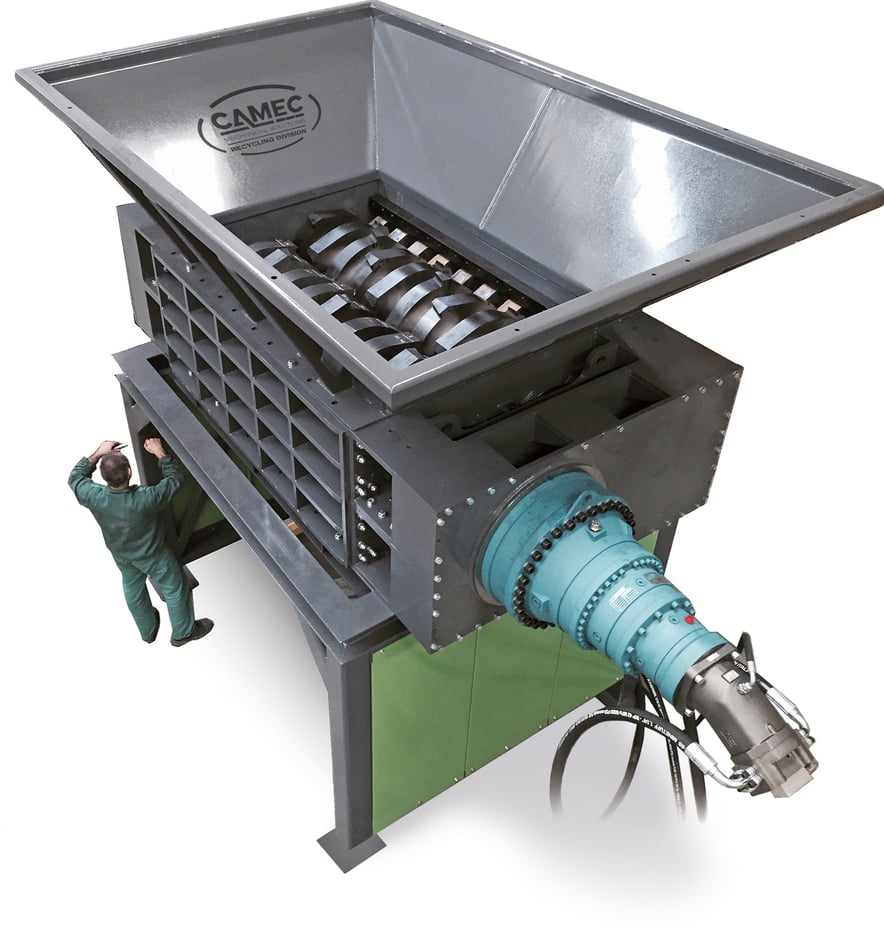The acronym WEEE (Waste Electrical and Electronic Equipment) indicates all waste that contains electrical and electronic components and therefore cannot be disposed of as common unsorted waste but must be treated in specific recycling centers, to avoid the risk of environmental pollution and in order not to disperse in nature or landfill objects which, due to their composition, have extremely long degradation times.
How WEEE is classified
WEEE is an important challenge for the recycling sector, since this category includes the waste of many everyday objects that inevitably go into obsolescence or that in any case break down and must be replaced and disposed of relatively frequently.
A first classification divides WEEE into two large categories:
- Household WEEE, i.e. waste of items used in the home
- Professional WEEE, i.e. waste of objects used outside home, inside offices, production plants, in the catering sector and so on
It is immediately obvious that this classification does not concern the type of objects to be treated, but only the context in which they were used. As regards the type of WEEE, however, the legislation indicates 5 main families:
- WEEE R1 – Refrigerating equipment: including refrigerators, freezers, industrial or professional refrigeration appliances, but also air conditioning appliances
- WEEE R2 – Big Whites: this cathegory includes all big household appliances that do not contain refrigerant circuits, such as washing machines, dryers, dishwashers, hobs, microwave ovens, heating systems and so on.
- WEEE R3 – TV e monitor: cathode ray tube monitors and televisions and flat screen monitors and televisions are included in this cathegory
- WEEE R4 – Small appliances, consumer electronics, information and communication technologies, lighting equipment and more: this group includes a huge variety of WEEE, since it includes all electrical appliances normally used at home (irons, blenders, toasters …) but also devices and accessories for information technology (printers, laptops, central computer units, mice, keyboards), solar panels, telephones of all kinds, many of the tools used for small repairs or home maintenance (lawn mowers, drills, spraying devices …), sports equipment equipped with electrical or electronic components and many other objects of daily use.
- WEEE R5 – Light sources: LED, discharge, fluorescent and neon lamps all fall into the latter category of WEEE.
This short list is sufficient to demonstrate how important it is to treat WEEE correctly: each of us annually produces a large amount of this type of waste, which has to be managed correctly in order not to cause environmental damage. Also for this reason, the European Community has issued various regulations – later implemented by the individual member countries – which indicate how to manage waste electrical and electronic equipment by creating a virtuous circle that aims to:
- Limit the production of WEEE as much as possible by favoring the recovery and recycling of electrical and electronic devices
- Produce objects with a better environmental profile, minimizing the presence of hazardous substances inside the equipment
- Treat WEEE correctly once it is disposed of
It is important to underline that small WEEE are only apparently “more harmless” than large WEEE, and that indeed it is they who run the greatest risk of being disposed of incorrectly. Normally, in fact, those who buy a new large appliance exercise their right to ask the retailer to collect the old one, which is then sent to a disposal center, while it is more common for small objects such as lamps, telephones and appliances to be simply thrown away with unsorted waste. To prevent this from happening, it is important that everyone is informed about the correct ways of disposing of WEEE and the importance of delivering them to specialized centers or returning them to retailers who will then take care of sending them to the plants capable of treating them.
How WEEE is recycled
Once collected separately, WEEE is treated in specialized centers, which must have received authorization for the management of this type of waste and which must demonstrate that they are able to use «the best treatment, recovery and recycling techniques available», as indicated in the legislation governing the sector.
The treatment phases of WEEE are many and vary according to the type of waste treated, but generally involve at least five different phases:
-
- Storage of waste, pending their treatment
- Securing (reclamation), i.e. elimination of dangerous components (refrigerant coolants, mercury, etc.)
- Shredding of waste to reduce its size
- Separation of materials, or subdivision of the main components (plastic, ferrous metals, non-ferrous metals …) that make up the waste
- Recovery of materials, or differentiation of the individual materials present.
It is calculated that in this way it is possible to recover and recycle 80% of the materials that make up WEEE (which also contain small but significant quantities of precious metals such as gold, silver or copper) making them usable again for new applications.
Do you want to learn more about the legislation regarding the WEEE disposal? Download our guide!


